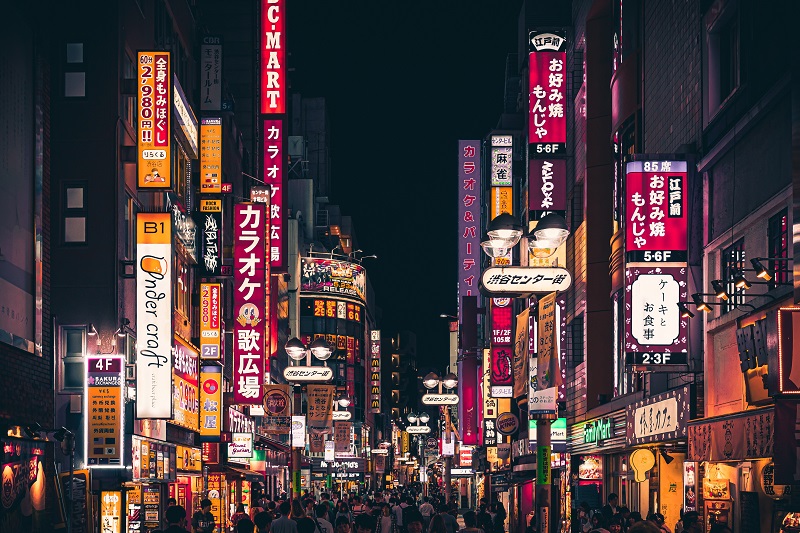Get A 6% Yield In A Red-Hot Market
Japan has been mired in an economic slump for decades. Despite keeping its benchmark interest rate below 1% since 1995—and at or below 0% or below for more than a decade—GDP growth rates have struggled to consistently stay in positive territory.
That’s why investing in Japanese stocks has been mostly an exercise in futility for the past 30 years.
But as Warren Buffett has discovered, things are finally changing in Japan, or to use the title of an old Bob Dylan song, “The Times They Are A-Changin’.”
Even a change in the Bank of Japan’s multi-decade-long interest rate policy—because of rising inflation—seems to be in the works.
Here’s how that sets you up for a great investment opportunity…
Buffett Does It Again
Buffett has gone shopping in the stock bargain basement across the Pacific known as Japan. His surprise bet on five Japanese companies has nearly tripled in size to, $17 billion, in under three years. The surge partially reflects the buying of more shares, but also the companies’ stock prices soaring to multi-decade highs.
Buffett’s Berkshire Hathaway (BRK.B) conglomerate disclosed 5% stakes in five Japanese trading houses—Itochu (ITOCY), Marubeni (MARUY), Mitsubishi (MSBHF), Mitsui (MITSY), and Sumitomo (SSUMY)—in August 2020. Berkshire has ramped up those positions to about 7.4% across the board, Buffett disclosed in May.
Since Buffett’s original purchase—at what he called “ridiculously” cheap valuations—the five stocks have gained, on average, in excess of 180%!
This is representative of what is going on with Japanese stocks as a whole recently: Japan’s Nikkei 225 index has jumped about 27% this year, outstripping the gains for the S&P 500 (18.6%). The Nikkei has not been this high for more than 33 years!
So how can you join Buffett’s profitable foray into Japan, while picking up a decent dividend as well? Let me show you…
Aberdeen Japan Equity Fund
You can do so through a closed-end fund: the Aberdeen Japan Equity Fund (JEQ).
Taking a close look, we find that the JEQ portfolio is heavily invested in large- and mega-cap stocks. These are largely quality growth stocks, with some value there too.
Diving into the fund’s sector breakdown, its 20% allocation to the tech sector is about 6% more than you’d find in a plain vanilla Japanese equity fund portfolio. Cyclicals are slightly underweight, while defensive sectors, including consumer staples (12.2%) and healthcare (11%) are overweight. And industrial stocks—the traditional strength of the Japanese economy—have an 18% allocation.
JEQ’s top position is the entertainment giant, Sony (SONY); some of its other top holdings include the technology-related firms Advantest (ATEYY) and Keyence (KYCCF), the insurance firm Tokio Marine (TKOMY), and the food and beverage company Asahi Group Holdings (ASBRF). All in all, there’s actually a fairly nice mix of exposures that doesn’t really lean too far one way or another toward growth or value.
The fund holds only about 70 stocks names overall, but it’s not overly concentrated. No individual stock makes up more than a 5% position, so there’s little idiosyncratic risk. In fact, some of the large-cap names at the top of the portfolio add a degree of stability.
For a closed-end fund investing in what has been a lousy market, the discount to net asset value (NAV) for it has been remarkably consistent over the years. The current 14% to 15% discount is at the low end of its historical range.
Buy JEQ
At the annual Berkshire Hathaway shareholder meeting on May 6, Buffett told his audience that he was “not done” with his search for more investable targets in Japan.
I can see why: there are still very cheap valuations there. The benchmark Topix index is trading at a level of just 16 times its earnings over the previous year. That compares to 20 times for the S&P 500 index and about 18 times for the MSCI World Index.
Keep in mind too, that at the start of 2023, more than half of all TSE stocks were trading below their book value! The reason was often too high a reserve of cash.
This bodes well for Japanese stocks for the foreseeable future, and this closed-end fund looks like a good way to join with Buffett. According to Morningstar data, the fund’s cumulative return is 19.16% year-to-date.
JEQ has been paying quarterly dividends only since 2022. Prior to that, dividends were distributed annually. The current policy mandates at least a 6.5% annual distribution of net assets. Right now, the quarterly distribution is set at $0.10 per share, or $0.40 per share annually. At current share prices, that translates to a distribution rate of 6.92%.
The managed distribution rate provides stability and predictability of the income stream; if the performance of Japanese stocks improves even more, the distribution amount will increase. And if Buffett is right, Japan could draw in additional investors and close JEQ’s discount to its NAV, adding to the returns.
JEQ is a buy below $6 a share.
This post originally appeared at Investors Alley.
Category: Dividend Yield





